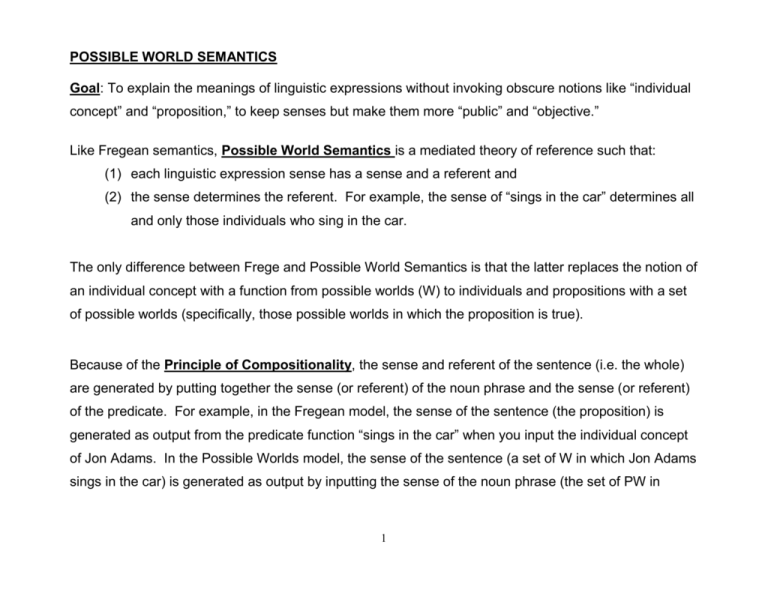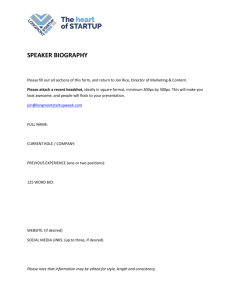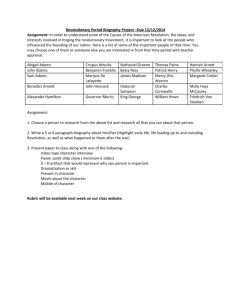POSSIBLE WORLD SEMANTICS
advertisement

POSSIBLE WORLD SEMANTICS Goal: To explain the meanings of linguistic expressions without invoking obscure notions like “individual concept” and “proposition,” to keep senses but make them more “public” and “objective.” Like Fregean semantics, Possible World Semantics is a mediated theory of reference such that: (1) each linguistic expression sense has a sense and a referent and (2) the sense determines the referent. For example, the sense of “sings in the car” determines all and only those individuals who sing in the car. The only difference between Frege and Possible World Semantics is that the latter replaces the notion of an individual concept with a function from possible worlds (W) to individuals and propositions with a set of possible worlds (specifically, those possible worlds in which the proposition is true). Because of the Principle of Compositionality, the sense and referent of the sentence (i.e. the whole) are generated by putting together the sense (or referent) of the noun phrase and the sense (or referent) of the predicate. For example, in the Fregean model, the sense of the sentence (the proposition) is generated as output from the predicate function “sings in the car” when you input the individual concept of Jon Adams. In the Possible Worlds model, the sense of the sentence (a set of W in which Jon Adams sings in the car) is generated as output by inputting the sense of the noun phrase (the set of PW in 1 which Jon Adams exists) into the predicate function that inputs the set of possible worlds in which Jon Adams exists. Linguistic Expression Noun phrase “Jon Adams” Predicate “sings in the car” Fregean Sense the individual concept of Jon Adams Possible World Sense the function1 that inputs W and outputs only the set of individuals that are Jon Adams Referent/ Denotation the designated individual Jon Adams, in person (the output of its sense when the actual W is input function that inputs individual concepts and yields a proposition that claims that the individual sings in the the function2 that inputs W and outputs a function3 from W to individuals (or the set of individuals) that sing in the car the function that inputs individuals and yields a truth value of T iff the individual denoted sings in the car (or the set of individuals who sing in the car) the function that inputs W and outputs True if and only if Jon sings in the car the truth value of the sentence determined by the sense of the sentence when the actual world is input Sentence “Jon sings in the car”the proposition that Jon sings in the car the set of W in which Jon sings in the car 2


![[Company Name] Certificate of Completion](http://s2.studylib.net/store/data/005402466_1-8a11f4ced01fd5876feee99f8d8e6494-300x300.png)
